Volume 9-14 (2020-26)
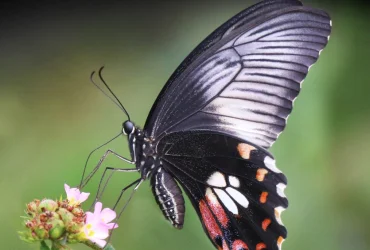 v10i2.267
v10i2.267ISSN: 1800-427X (printed)
eISSN: 1800-427X (online)
DOI:10.47605/tapro.v10i2.267
Submitted date: 24 May 2021
Accepted date: 9 September 2021
Published date: 22 November 2021
Pp. 135–137
Gliding behaviour of Indian giant flying squirrel (Petaurista philippensis)
D. Barthwal*, A.K. Jangid & N. Dharaiya
*E-mail: diksha.b1608@gmail.com
The Indian giant flying squirrel or large brown flying squirrel, Petaurista philippensis (Elliot, 1839) is one of 13 gliding squirrel species found in India. Nocturnal by nature, they have ability to glide up to 150 m. We studied its gliding habit in the human-modified landscape of the Kevdi ecotourism site (22.5198ºN, 73.9356ºE; Fig. 1), Panchmahal District, between two protected areas in Gujarat: Ratanmahal Sloth Bear Sanctuary and Jambughoda Wildlife Sanctuary. The Kevdi ecotourism site is a known locality of this species. Here, we present basic information on the gliding ecology of the species in the dry deciduous forests of central Gujarat.
Section Editor: Lee Harding
eISSN: 1800-427X (online)
DOI:10.47605/tapro.v10i2.267
Submitted date: 24 May 2021
Accepted date: 9 September 2021
Published date: 22 November 2021
Pp. 135–137
Gliding behaviour of Indian giant flying squirrel (Petaurista philippensis)
D. Barthwal*, A.K. Jangid & N. Dharaiya
*E-mail: diksha.b1608@gmail.com
The Indian giant flying squirrel or large brown flying squirrel, Petaurista philippensis (Elliot, 1839) is one of 13 gliding squirrel species found in India. Nocturnal by nature, they have ability to glide up to 150 m. We studied its gliding habit in the human-modified landscape of the Kevdi ecotourism site (22.5198ºN, 73.9356ºE; Fig. 1), Panchmahal District, between two protected areas in Gujarat: Ratanmahal Sloth Bear Sanctuary and Jambughoda Wildlife Sanctuary. The Kevdi ecotourism site is a known locality of this species. Here, we present basic information on the gliding ecology of the species in the dry deciduous forests of central Gujarat.
Section Editor: Lee Harding
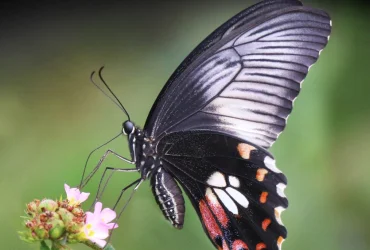 v10i2.266
v10i2.266ISSN: 1800-427X (printed)
eISSN: 1800-427X (online)
DOI:10.47605/tapro.v10i2.266
Submitted date: 23 March 2021
Accepted date: 11 September 2021
Published date: 22 November 2021
Pp. 133–134
A breeding record of the brown hawk owl (Ninox scutulata) in Assam, India
S.P. Ranade*
*E-mail: s.ranade@bnhs.org
The brown hawk owl, Ninox scutulata (Raffles, 1822) is a common, medium sized bird of prey on the Indian subcontinent and listed as of least concern. Its distribution range extends up to eastern Siberia, Japan, the Andmans, the Malay Peninsula, the Great and Lesser Sundas, Wallacea, Taiwan, the Philippines and Australia. There are 11 well documented subspecies across this wide distribution. A pair of brown hawk owls was observed nesting on a Dillenia indica tree (Family Dilleniaceae), in Guwahati, Kamrup District, Assam, India. The nest was in a cavity at a height of about 4 m. The tree was about 14 m tall and the main trunk was about 7 m in girth. It had a dense canopy with its large elliptical leaves.
Section Editor: S.M. Henkanaththegedara
eISSN: 1800-427X (online)
DOI:10.47605/tapro.v10i2.266
Submitted date: 23 March 2021
Accepted date: 11 September 2021
Published date: 22 November 2021
Pp. 133–134
A breeding record of the brown hawk owl (Ninox scutulata) in Assam, India
S.P. Ranade*
*E-mail: s.ranade@bnhs.org
The brown hawk owl, Ninox scutulata (Raffles, 1822) is a common, medium sized bird of prey on the Indian subcontinent and listed as of least concern. Its distribution range extends up to eastern Siberia, Japan, the Andmans, the Malay Peninsula, the Great and Lesser Sundas, Wallacea, Taiwan, the Philippines and Australia. There are 11 well documented subspecies across this wide distribution. A pair of brown hawk owls was observed nesting on a Dillenia indica tree (Family Dilleniaceae), in Guwahati, Kamrup District, Assam, India. The nest was in a cavity at a height of about 4 m. The tree was about 14 m tall and the main trunk was about 7 m in girth. It had a dense canopy with its large elliptical leaves.
Section Editor: S.M. Henkanaththegedara
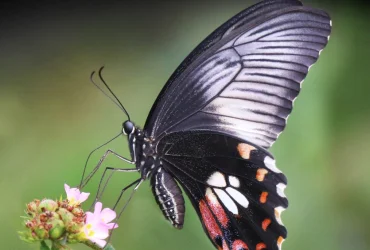 v10i2.265
v10i2.265ISSN: 1800-427X (printed)
eISSN: 1800-427X (online)
DOI:10.47605/tapro.v10i2.265
Submitted date: 22 September 2021
Accepted date: 15 November 2021
Published date: 22 November 2021
Pp. 132, pl. 30.
On the occurance of crowned river turtle, Hardella thurjii in Gujarat, India
Raju Vyas & Harshil Patel*
*E-mail: harshilpatel121@gmail.com
The crowned river turtle, Hardella thurjii (Gray, 1831) is widely distributed from Pakistan to Bangladesh, and possibly in western Myanmar. It prefers the middle and lower reaches of the northern river systems on the Indian subcontinent, comprising the Indus, Ganga, Brahmaputra, and their tributaries. The species is classified as Endangered, but nationally remains a poorly protected species under the Indian Wildlife Protection Act. This communication presents the first photographic evidence of the crowned river turtle, from Gujarat State, India. It was previously reported from North Gujarat two decades ago, but without any evidence.
Section Editor: Thasun Amarasinghe
eISSN: 1800-427X (online)
DOI:10.47605/tapro.v10i2.265
Submitted date: 22 September 2021
Accepted date: 15 November 2021
Published date: 22 November 2021
Pp. 132, pl. 30.
On the occurance of crowned river turtle, Hardella thurjii in Gujarat, India
Raju Vyas & Harshil Patel*
*E-mail: harshilpatel121@gmail.com
The crowned river turtle, Hardella thurjii (Gray, 1831) is widely distributed from Pakistan to Bangladesh, and possibly in western Myanmar. It prefers the middle and lower reaches of the northern river systems on the Indian subcontinent, comprising the Indus, Ganga, Brahmaputra, and their tributaries. The species is classified as Endangered, but nationally remains a poorly protected species under the Indian Wildlife Protection Act. This communication presents the first photographic evidence of the crowned river turtle, from Gujarat State, India. It was previously reported from North Gujarat two decades ago, but without any evidence.
Section Editor: Thasun Amarasinghe
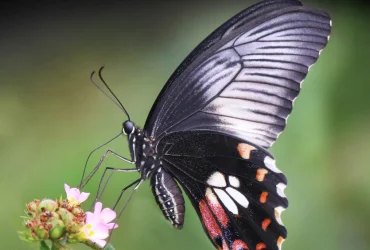 v10i2.264
v10i2.264ISSN: 1800-427X (printed)
eISSN: 1800-427X (online)
DOI:10.47605/tapro.v10i2.264
Submitted date: 30 May 2021
Accepted date: 9 September 2021
Published date: 22 November 2021
Pp. 131, pl. 29.
Chromatic leucism in the flap shell turtle, Lissemys punctata from Bangladesh
M.F. Rabbe*, M.M. Alam, M.F. Jaman, M.S. Hossain, K.N.M. Sarafat & A.R. Shome
*E-mail: fazlerabbedu@gmail.com
The spotted flap shell turtle, Lissemys punctata (Bonnaterre, 1789) has a distribution in Bangladesh, India, Myanmar, Nepal and Pakistan. In Bangladesh, this species is widely distributed throughout the freshwater wetlands and the low-lying floodplains, coastal islands, and hill districts. This species is listed in CITES (Appendix II) and protected by Bangladesh Wildlife Conservation & Security Act 2012 (Schedule II), where commercial trade is strictly prohibited. Lissemys punctata has an oval and domed carapace with olive-green colour spotted by dark yellow blotches. The head is also olive green often with yellow blotches, whereas the plastron is whitish or pale yellow. The colour of this species may vary depending on its habitat and defence strategy. Colour aberration in animals may occur due to a lack of melanin. Golden yellow colour aberration (chromatic leucism) is rare in animals, especially in turtles. This might be because of the absence of melanin in the outer dermis. The presence of high xanthophores and yellow pteridine pigments in the skin are also responsible for the golden yellow colour aberration.
Section Editor: Phil Bowles
eISSN: 1800-427X (online)
DOI:10.47605/tapro.v10i2.264
Submitted date: 30 May 2021
Accepted date: 9 September 2021
Published date: 22 November 2021
Pp. 131, pl. 29.
Chromatic leucism in the flap shell turtle, Lissemys punctata from Bangladesh
M.F. Rabbe*, M.M. Alam, M.F. Jaman, M.S. Hossain, K.N.M. Sarafat & A.R. Shome
*E-mail: fazlerabbedu@gmail.com
The spotted flap shell turtle, Lissemys punctata (Bonnaterre, 1789) has a distribution in Bangladesh, India, Myanmar, Nepal and Pakistan. In Bangladesh, this species is widely distributed throughout the freshwater wetlands and the low-lying floodplains, coastal islands, and hill districts. This species is listed in CITES (Appendix II) and protected by Bangladesh Wildlife Conservation & Security Act 2012 (Schedule II), where commercial trade is strictly prohibited. Lissemys punctata has an oval and domed carapace with olive-green colour spotted by dark yellow blotches. The head is also olive green often with yellow blotches, whereas the plastron is whitish or pale yellow. The colour of this species may vary depending on its habitat and defence strategy. Colour aberration in animals may occur due to a lack of melanin. Golden yellow colour aberration (chromatic leucism) is rare in animals, especially in turtles. This might be because of the absence of melanin in the outer dermis. The presence of high xanthophores and yellow pteridine pigments in the skin are also responsible for the golden yellow colour aberration.
Section Editor: Phil Bowles
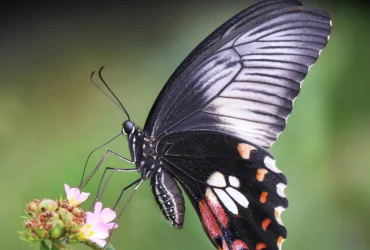 v10i2.263
v10i2.263ISSN: 1800-427X (printed)
eISSN: 1800-427X (online)
DOI:10.47605/tapro.v10i2.263
Submitted date: 1 August 2021
Accepted date: 26 October 2021
Published date: 22 November 2021
Pp. 128–130
Copulatory behavior of Knuckles pygmy lizard (Cophotis dumbara)
H.D.C. Soysa*, U.S.B. Hettige, M.G. Cooray & D.R. Vidanapathirane
*E-mail: hdcsoysa@mail.com
Nearly one in every five species of reptiles in the world is threatened with extinction and thus is conservation dependent. In order to develop effective and targeted species conservation strategies, detailed information on their distribution, systematics and ecology are necessary. Information such as the natural history and in-situ reproductive behaviors would be crucial for highly threatened species that require ex-situ conservation measures. Agamid lizards are a major component of the global reptile diversity and a significant number are threatened due to habitat loss and other threats such as smuggling.
Section Editor: Thasun Amarasinghe
eISSN: 1800-427X (online)
DOI:10.47605/tapro.v10i2.263
Submitted date: 1 August 2021
Accepted date: 26 October 2021
Published date: 22 November 2021
Pp. 128–130
Copulatory behavior of Knuckles pygmy lizard (Cophotis dumbara)
H.D.C. Soysa*, U.S.B. Hettige, M.G. Cooray & D.R. Vidanapathirane
*E-mail: hdcsoysa@mail.com
Nearly one in every five species of reptiles in the world is threatened with extinction and thus is conservation dependent. In order to develop effective and targeted species conservation strategies, detailed information on their distribution, systematics and ecology are necessary. Information such as the natural history and in-situ reproductive behaviors would be crucial for highly threatened species that require ex-situ conservation measures. Agamid lizards are a major component of the global reptile diversity and a significant number are threatened due to habitat loss and other threats such as smuggling.
Section Editor: Thasun Amarasinghe
Hubungi Kami
The ultimate aim of the journal is to provide an effective medium for communication of the latest and best scientific information.
Copyright © 2020 Taprobanica. All Rights Reserved
Jasa Pembuatan Website by IKT




